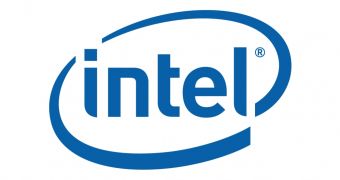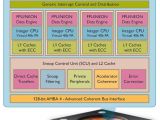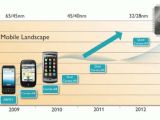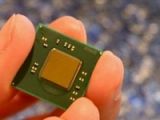With the Cortex A15 design, ARM managed to find the holy grail of CPU design. This is something many seem to not have noticed during this spring.
Sure, we were busy with Kepler's launch, AMD's Trinity leaks and Ivy Bridge, but none of these launches or expectations are as impressive as ARM's Cortex A15 design.
With the A15, ARM managed to achieve three major goals of any CPU design team: a consecutive architecture (a) doubles the performance of the previous design while (b) consuming less power and actually (c) doubling the single threaded performance (IPC) rather than adding parallel processing power.
Neither Intel, AMD nor IBM have ever managed a feat just like this. ARM managed to find and requisition three "holy grails," if we may say so.
None of the other CPU designers ever managed to achieve such a feat, let alone three at the same time.
ARM and its licensees are not even trying to squeeze out the most of their A15 architecture.
The A15 dual core CPUs can perfectly run at 2,5 GHz and the quad core part can also be manufactured in the same 28 nm technology at the same speeds.
Intel's Medfield is currently the best phone chip it has to offer.
The established smartphone players have to think about battery life also. In a tablet, a 2,5 GHz dual core Cortex A15 CPU will most certainly trounce Intel’s Clover Field.
Moreover, we have to take into account the fact that the A15 is two year-old technology.
Yes, the ARM Cortex A15 architecture was first made available by ARM two years ago, back in 2010 and, if we consider the fact that A15 was presented only three years after the A9, we may expect an even more advanced ARM architecture in the next year or two.
Moreover, as you can see from the previous picture, back in 2010 ARM expected the Cortex A15 to become available in late 2012/ early 2013. They are practically well ahead of their own schedule expectations.
By that time, the hypothetical Cortex A25 will be made in 20 nm technology or smaller and, even with an IPC improvement of only 50%, not the 100% we see in today’s A15, it would be able to beat any 2,5 GHz Clover Field, most likely built in 22 nm tech.
The nails that ARM’s A15 and Samsung’s own A9 and A15 custom implementations are beating in Atom’s coffin are so painful for Intel right now that the company appears to have started a delirium.
Intel seems to be babbling about The Matrix and the Star Trek’s Borg while showing whitepaper-characterized, science-fiction essays.
While you can’t characterize an essay as a science-fiction novel, you can't characterize an essay on somebody’s favorite SF movies as a company whitepaper either.
They’re likely in the state of doing everything to get the people’s mind away from the fact that their apparent success from two weeks before is now something worthless, considering that Samsung and Apple get 99 % of the smartphone market profits and Intel’s not invited.
Don't get us wrong, Intel's Medfield is a high-performing smartphone chip that's competing for the profits of the smartphone market. Intel's problem is the fact that the best they can offer is inferior to what the competition has on the table already.
Since both Samsung and Apple use ARM processors and Intel's product is inferior, how can Intel hope to get a piece of the 1% smartphone pie that's left when the Cupertino giant and the Korean behemoth are done eating?
Since the Atom “scam” is Intel’s 2008 project, we consider this to be one of Intel’s three major embarrassing developments of the last decade.
Of those three, Atom is responsible for two of them, but before that, be sure to check out the first chapter of our "Intel’s Third Embarrassment of the Last Decade" story.
More on Intel’s battle for profit against the customer’s benefit, in our next analysis coming in the following weeks.

 14 DAY TRIAL //
14 DAY TRIAL // 




